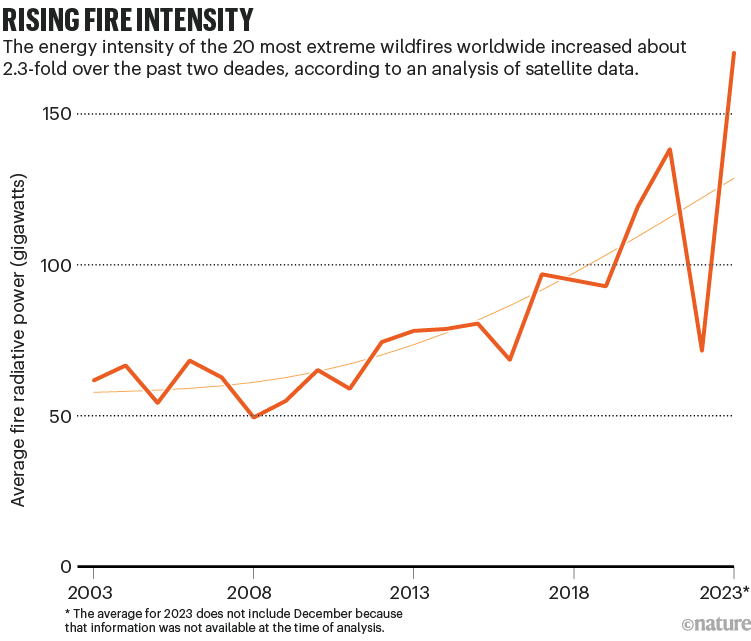The frequency at which extreme fires occur around the world has more than doubled during the past two decades, according to an analysis of satellite data1. The trend is driven by the exponential growth of extreme fires across vast portions of Canada, the western United States and Russia, researchers say.
The results provide the first solid evidence to support a nagging suspicion that many scientists and others have had as they watch a seemingly endless series of cataclysmic infernos scorch ecosystems and communities: wildfires have increased somehow, and climate change is almost certainly a factor.
“It’s the extreme events that we care about the most, and those are the ones that are increasing quite significantly,” says lead author Calum Cunningham, an ecologist at the University of Tasmania in Hobart, Australia. “Surprisingly, this has never been shown at a global scale.”
Heating up
Table of Contents
Researchers have already documented an increase in wildfire activity across the western forests of the United States2, but they have had a harder time pinning down a clear global trend. One confounding factor is that the amount of land burned annually has been declining, in part owing to a steady reduction in fire activity in African grasslands and savannahs.
For the current study, published in Nature Ecology and Evolution on 24 June1, Cunningham and his colleagues scoured global satellite data for fire activity. They used infrared records to measure the energy intensity of nearly 31 million daily fire events over two decades, focusing on the most extreme ones — roughly 2,900 events. The researchers calculated that there was a 2.2-fold increase in the frequency of extreme events globally in 2003–23, and a 2.3-fold boost in the average intensity of the top 20 most intense fires each year (see ‘Rising fire intensity’).

Source: Ref. 1
The forests most affected by extreme fires were those in places such as western North America that contain coniferous trees including spruce and pine; they showed an 11.1-fold increase in the number of fires over the study period. Boreal forests at high latitudes in countries such as Canada, the United States and Russia were also significantly affected, showing a 7.3-fold increase in fires.
The results aren’t necessarily surprising, says Park Williams, a hydroclimatologist at the University of California, Los Angeles. But they are the first compelling evidence that “extreme fires have grown more extreme”, he adds.
Although the study doesn’t directly connect the fire trend to global warming, Cunningham says “there’s almost certainly a significant signal of climate change”. Research has shown3 that rising temperatures are drying out ecosystems — such as coniferous forests — that are naturally prone to fire. This provides fuel that can boost the fires’ size and longevity. The latest study also found that the energy intensity of the fires increased faster during the night-time over the past two decades than during the daytime, which aligns with evidence4 that rising night-time temperatures are contributing to fire risk.
The researchers identified extreme fires occurring in several other biomes across the globe, including those in Australia, which experienced unprecedented wildfires in 2019 and 2020, and the Mediterranean. Although they didn’t see clear trends in these regions, Cunningham says that it might be only a matter of time before they emerge as temperatures continue to rise.
